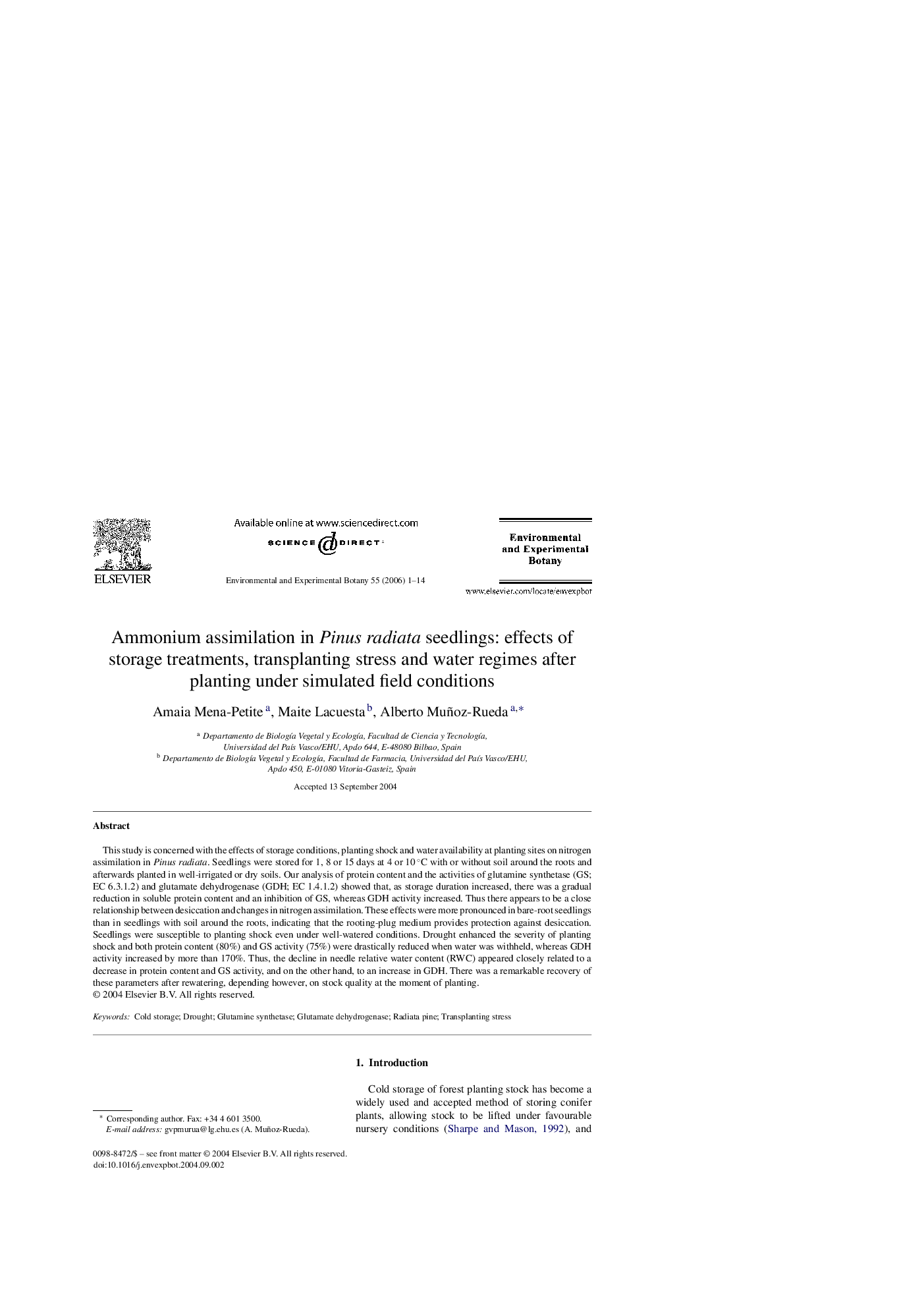| Article ID | Journal | Published Year | Pages | File Type |
|---|---|---|---|---|
| 4555730 | Environmental and Experimental Botany | 2006 | 14 Pages |
This study is concerned with the effects of storage conditions, planting shock and water availability at planting sites on nitrogen assimilation in Pinus radiata. Seedlings were stored for 1, 8 or 15 days at 4 or 10 °C with or without soil around the roots and afterwards planted in well-irrigated or dry soils. Our analysis of protein content and the activities of glutamine synthetase (GS; EC 6.3.1.2) and glutamate dehydrogenase (GDH; EC 1.4.1.2) showed that, as storage duration increased, there was a gradual reduction in soluble protein content and an inhibition of GS, whereas GDH activity increased. Thus there appears to be a close relationship between desiccation and changes in nitrogen assimilation. These effects were more pronounced in bare-root seedlings than in seedlings with soil around the roots, indicating that the rooting-plug medium provides protection against desiccation. Seedlings were susceptible to planting shock even under well-watered conditions. Drought enhanced the severity of planting shock and both protein content (80%) and GS activity (75%) were drastically reduced when water was withheld, whereas GDH activity increased by more than 170%. Thus, the decline in needle relative water content (RWC) appeared closely related to a decrease in protein content and GS activity, and on the other hand, to an increase in GDH. There was a remarkable recovery of these parameters after rewatering, depending however, on stock quality at the moment of planting.
